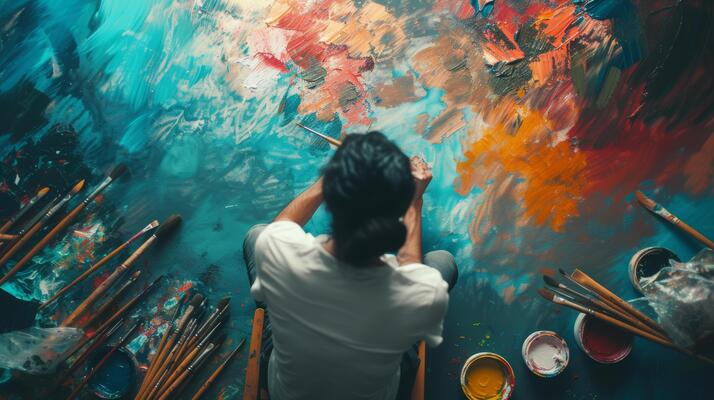How to Scan and Digitize Old Photos for Painting: A Creative Guide
In the world of professional photography, the practice of converting physical photographs into digital formats has become an essential skill. Whether you're working on a personal project or a professional commission, knowing how to scan and digitize old photos for painting can open up a world of creative possibilities. This process not only preserves precious memories but also allows photographers to explore new artistic avenues by transforming these images into stunning paintings.
In this article, we will delve into the detailed steps required to scan and digitize your old photos, ensuring they are ready for any painting project you have in mind. From selecting the right equipment to understanding the nuances of digital restoration, we aim to equip you with all the knowledge necessary to elevate your photography practice.

Why Digitizing Old Photos is Crucial for Modern Artists
The digitization of old photos is more than just a preservation technique. For Professional Photographers, it serves as a gateway to merging traditional photography with modern art forms. By digitizing these images, you can manipulate them using advanced software, enhancing their quality and preparing them for artistic endeavors such as painting. This process breathes new life into old photographs, offering a fresh perspective that can be translated into various art forms.
Moreover, digitized photos allow photographers to experiment with modern photo-based art styles, blending the old with the new. This not only expands your creative palette but also attracts a wider audience who appreciate both classic and contemporary art.
Essential Equipment for Scanning Photos
Before you begin the digitization process, it's critical to have the right tools at your disposal. The primary equipment you'll need includes:
1. High-Quality Scanner
Investing in a high-quality scanner is key to achieving excellent digital copies of your photographs. Look for scanners that offer high resolution, as this will ensure that every detail is captured accurately. Brands like Epson and Canon offer reliable options that are favored by many professionals.
2. Photo Editing Software
Once your photos are scanned, youll need robust photo editing software to refine and restore them. Programs such as Adobe Photoshop and Lightroom are industry standards, providing comprehensive tools for photo enhancement and restoration.
Steps to Scan and Digitize Your Photos
Now that you have your equipment ready, let's walk through the steps of scanning and digitizing your old photos:
Step 1: Prepare Your Photos
Before scanning, ensure your photos are clean and free from dust or smudges. Use a soft brush or a microfiber cloth to gently wipe them clean.
Step 2: Set Up Your Scanner
Connect your scanner to your computer and install any necessary drivers or software. Adjust the scanner settings to achieve the highest possible resolution, typically 300 DPI or higher for photo scanning.
Step 3: Scan the Photos
Place your photo on the scanner bed and use the preview function to check its alignment. Once satisfied, initiate the scan and save the file in a high-resolution format such as TIFF or PNG.
Step 4: Edit and Restore
Open the scanned image in your photo editing software. Use tools to correct any color imbalances, remove blemishes, and adjust the contrast. This is also the stage where creative enhancements can be made, setting the stage for turning the photo into a painting.
For more detailed techniques on this process, you may want to explore resources like Artists Network, which provides insights into avoiding common pitfalls in photo-based art.
Transforming Digitized Photos into Paintings
With your photos now digitized and edited, you can begin the creative process of transforming them into paintings. This involves using digital painting software or traditional painting techniques to bring your vision to life. Digital painting programs such as Corel Painter offer a wide variety of brushes and effects that can mimic traditional painting styles.
If you're interested in DIY painting techniques, check out this guide on DIY photo-to-painting at home, which provides step-by-step instructions for creating art from your photos.
Conclusion
Learning how to scan and digitize old photos for painting is an invaluable skill for any professional photographer. It not only preserves your work but also enhances your creative capabilities, allowing you to explore new artistic horizons. By following the steps outlined in this guide, you can ensure that your photos are digitized with the highest quality, ready to be transformed into beautiful works of art.
For more inspiration and ideas on turning photographs into art, you might want to explore turning old letters and photos into art.

FAQs
1. What is the best resolution for scanning photos?
A resolution of 300 DPI or higher is recommended for scanning photos to capture all details accurately.
2. Can I use a flatbed scanner for digitizing photos?
Yes, a flatbed scanner is ideal for digitizing photos, as it provides a flat surface that ensures even scanning of the entire image.
3. How can I ensure my digitized photos are high quality?
Using a high-quality scanner and photo editing software, along with proper preparation of the photos, will help ensure that your digitized images are of the highest quality.

